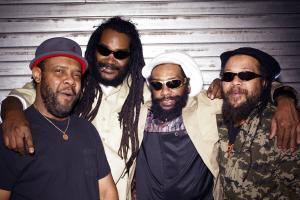 There are some bands that don’t always translate on the first listen. You could love a band. They could represent some great time in music, but when playing them for a friend to hear the first time, it won’t carry. Maybe that friend needs some kind of context or narrative to explain why Lifetime was such an important band. Then maybe after a few listens, and a mixtape or two, they’ll get it.
There are some bands that don’t always translate on the first listen. You could love a band. They could represent some great time in music, but when playing them for a friend to hear the first time, it won’t carry. Maybe that friend needs some kind of context or narrative to explain why Lifetime was such an important band. Then maybe after a few listens, and a mixtape or two, they’ll get it.
That is not the case with Bad Brains. Nobody is going to argue whether or not The Bad Brains are important. It’s pretty much accepted that they were the first band to play the style that would become known as, “hardcore.” Their first album is unquestionably a perfect record. Their records are peppered with reggae tracks that provide an often much needed respite from the hardcore blitzkrieg of songs like, “Supertouch,” and they did a great deal to break down the color barriers of a music scene that was predominantly white.
Punknews interviewer Jon Reiss recently spoke with member Daryl Jenifer shedding some light on went into the making of this band that engendered a genre, gave rise to a whole new style of mosh and introduced a slew of people to the word, “Jah.”
Source 


That is not the case with Bad Brains. Nobody is going to argue whether or not The Bad Brains are important. It’s pretty much accepted that they were the first band to play the style that would become known as, “hardcore.” Their first album is unquestionably a perfect record. Their records are peppered with reggae tracks that provide an often much needed respite from the hardcore blitzkrieg of songs like, “Supertouch,” and they did a great deal to break down the color barriers of a music scene that was predominantly white.
Punknews interviewer Jon Reiss recently spoke with member Daryl Jenifer shedding some light on went into the making of this band that engendered a genre, gave rise to a whole new style of mosh and introduced a slew of people to the word, “Jah.”